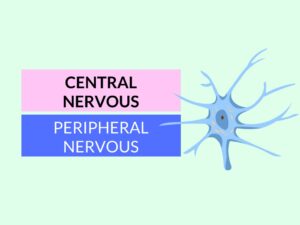Sympathetic vs Parasympathetic: Understanding the Differences
Have you ever wondered why your heart beats faster when you feel threatened or why you suddenly feel relaxed after a meal? These involuntary responses are controlled by two branches of the autonomic nervous system: the sympathetic and parasympathetic systems. While both systems work together to maintain homeostasis in our body, they have distinct roles and functions. In this article, we will explore the differences between the sympathetic and parasympathetic systems.
What is the Sympathetic System?
The sympathetic nervous system prepares the body to respond to stress or danger. Commonly known as the “fight-or-flight” response, it triggers physiological changes that help us survive in threatening situations. When activated, the sympathetic system increases heart rate, dilates blood vessels, and diverts blood from organs to muscles. This heightened state of arousal allows us to respond quickly and effectively to a perceived threat.
Examples of Sympathetic Activation:
- Increased heart rate and blood pressure during a high-intensity workout
- Dilated pupils in a dimly lit room to improve vision
- Adrenaline release when faced with a dangerous situation
- Sweating during an anxiety-provoking event
Uses of the Sympathetic System:
The sympathetic system plays a crucial role in our survival by preparing the body for action. It helps us respond effectively to emergencies, physical exertion, and stressful situations.
What is the Parasympathetic System?
In contrast to the sympathetic system, the parasympathetic system promotes relaxation and restoration. Also known as the “rest-and-digest” response, it helps conserve energy and supports the body’s essential functions during periods of rest. The parasympathetic system is active when we are relaxed, sleeping, or engaged in activities like eating.
Examples of Parasympathetic Activation:
- Slowing of heart rate and breathing while sleeping
- Increased digestive secretions after a meal
- Constricted pupils in bright light
- Relaxation and decreased muscle tension during meditation
Uses of the Parasympathetic System:
The parasympathetic system promotes rest, digestion, and the maintenance of vital bodily functions. It allows our body to recover, repair, and conserve energy during times of low activity or rest.
Differences between the Sympathetic and Parasympathetic Systems:
| Difference Area | Sympathetic | Parasympathetic |
|---|---|---|
| Nervous System Division | Division of the autonomic nervous system | Division of the autonomic nervous system |
| Main Function | Prepares the body for fight-or-flight response | Promotes relaxation and conserves energy |
| Activation Response | Stress, danger, threats | Rest, relaxation, digestion |
| Heart Rate | Increased | Decreased |
| Blood Pressure | Increased | Decreased |
| Pupil Size | Dilated | Constricted |
| Digestive Activity | Decreased | Increased |
| Salivation | Decreased | Increased |
| Adrenaline Release | Increased | Decreased |
| Sweating | Increased | Decreased |
Conclusion:
In summary, the sympathetic and parasympathetic systems are two branches of the autonomic nervous system with distinct roles. While the sympathetic system prepares the body for action during stressful situations, the parasympathetic system promotes relaxation and restores the body’s energy reserves. Understanding the differences between these systems helps us comprehend how our body responds to various stimuli and maintains balance.
People Also Ask:
1. What happens when both sympathetic and parasympathetic systems are active simultaneously?
When both systems are active simultaneously, they work together to maintain balance and ensure the body responds appropriately to different situations. For example, during exercise, the sympathetic system increases heart rate and blood flow to muscles, while the parasympathetic system supports digestion and regulates energy usage.
2. Can these systems be consciously controlled?
No, both the sympathetic and parasympathetic systems are controlled involuntarily by the autonomic nervous system. However, certain relaxation techniques, such as deep breathing and meditation, can help modulate their activity.
3. How can the sympathetic system negatively impact health?
Chronically elevated sympathetic activity can contribute to health issues like high blood pressure, chronic stress, and cardiovascular diseases. Managing stress, leading a healthy lifestyle, and practicing relaxation techniques can help regulate sympathetic activation.
4. What are some ways to activate the parasympathetic system?
Engaging in relaxation exercises, such as deep breathing, yoga, and meditation, can activate the parasympathetic system. Taking breaks, getting sufficient sleep, and engaging in activities that promote relaxation and enjoyment also support parasympathetic activity.
5. How do drugs and medications affect sympathetic and parasympathetic activity?
Certain drugs and medications can selectively target either the sympathetic or parasympathetic system. For example, beta-blockers block sympathetic activity, reducing heart rate and blood pressure, while drugs like pilocarpine increase parasympathetic activity, stimulating saliva production and constricting pupils.


